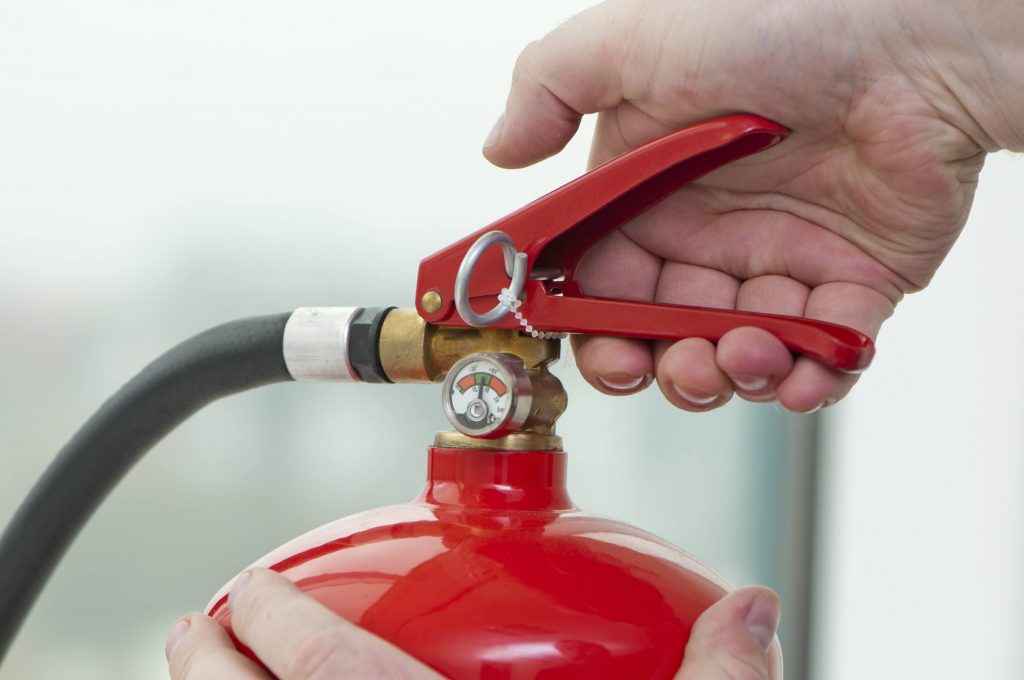
Portable firefighting equipment (PFE)
We offer a wide range of PFE equipment depending on the application. PFE is designed protect the user from fire. It is typically used by trained fire fighters, however, it is often provided to people at the scene of a fire. We also include it as part of a building’s infrastructure.
We provide testing and maintenance services for all PFE we supply to ensure full operating scope and compliance. This ensures it works when and how it is designed to work – in an emergency!
Hose reels, fire extinguishers, fire blankets and smoke alarm / detectors
We locate fire hose reels in strategic areas of buildings to enable effective firefighting if required. These systems are manually operated and essentially operate the same way that a garden hose does.
Fire extinguishers and fire blankets are also located in strategic positions. We select fire extinguishers based on the application – for example, putting out electrical fires.
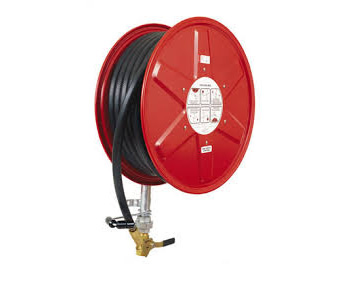
Fire blankets on the other hand are designed to smother smaller fires such as in a kitchen.
Smoke alarms are also essential fire protection tools. They are designed to sense smoke, typically as an indicator of fire. On our larger commercial projects, they issue a signal to a fire alarm control panel as part of a fire alarm system.
Residential smoke detectors (also known as smoke alarms), issue a local audible or visual alarm from the detector itself or several detectors if there are multiple smoke detectors interlinked. We provide testing and maintenance for residential smoke alarms on an annual basis.
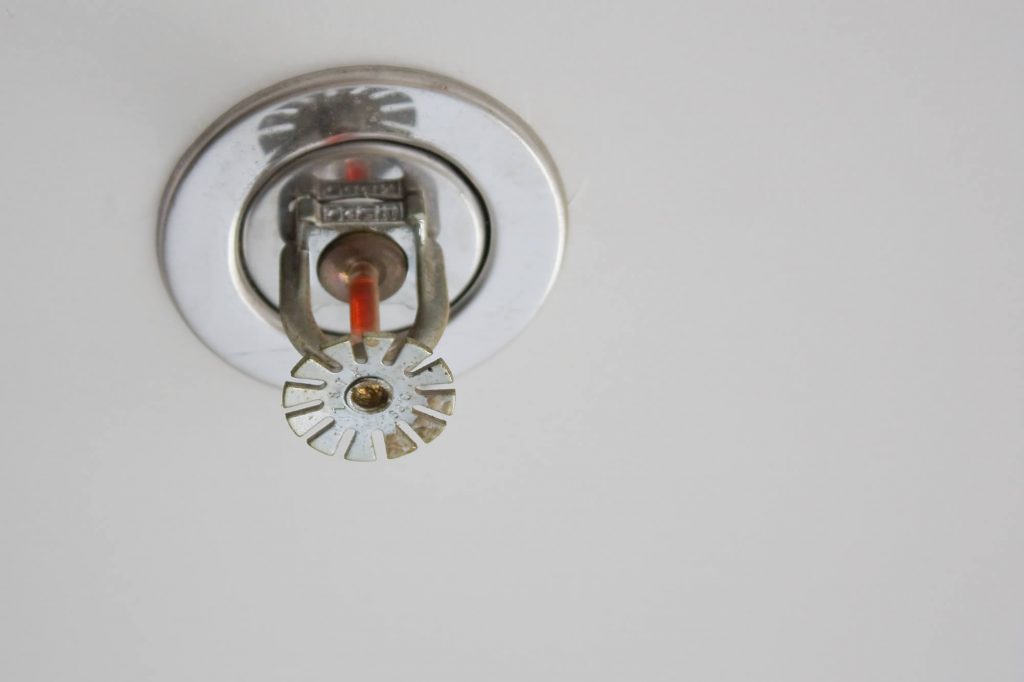
Fire sprinkler systems
Fire sprinkler systems are heat activated – one sprinkler head at a time – and most fires usually require only one or two sprinklers to be extinguished. We install these systems after careful, consideration of clients’ needs. These systems, when properly installed, reduce the damage to property from water, smoke and fire that other systems such as fire hoses can cause.
We test and maintain automatic fire sprinkler systems monthly, 6 monthly, annually, 5 and 10 yearly.
Fire pump set
An essential part of the fire sprinkler system’s water supply is the fire pump. The pump set provides higher water pressure flow for the sprinkler system risers and hose standpipes. The fire pump activates when the pressure in the fire sprinkler system drops below a baseline.
As with the fire sprinkler system itself, we test the fire pump and provide maintenance (as required) monthly, 6 monthly, annually, 5 10, 25 and 30 yearly.
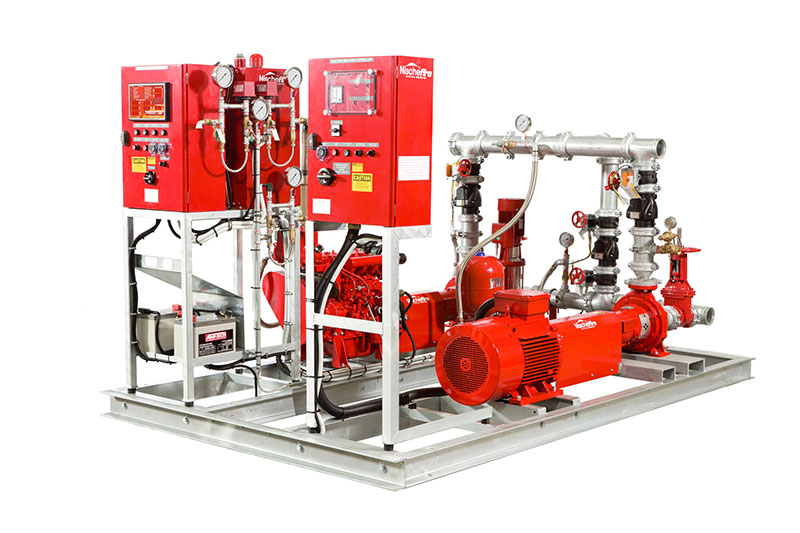
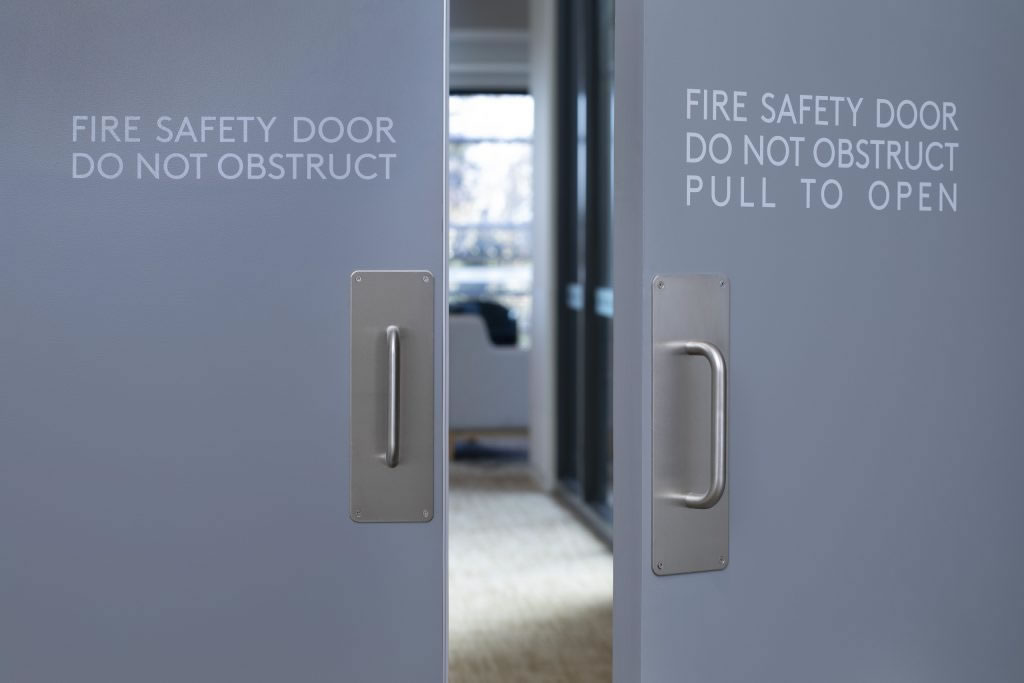
Fire doors
Fire doors are an integral component of fire protection in buildings. Known as passive fire protection systems, fire doors allow a passageway through fire resistant walls for building occupants.
When closed, fire doors restrict the spread of smoke, flames, toxic gases and other effects of fire and can be the difference between being able to escape a fire or being caught in one.
We check all our installed fire doors on a 6 monthly and annual basis to ensure they are performing as required.
Fire detection and alarm systems
We engage state of the art fire detection and alarm systems tailored to each client’s needs.
Fire detection and alarm systems are designed to discover fires early when there is time for occupants to safely evacuate the space. We also believe early detection plays a significant role in protecting the safety of emergency response personnel.
These systems help to minimise property loss through early fire detection. Our alarm systems also provide rapid information to emergency services on the location of the fire, minimising the time needed to respond.
We maintain and test our systems on a monthly, 6 monthly, annual and 5 yearly basis ensuring perfect operation.
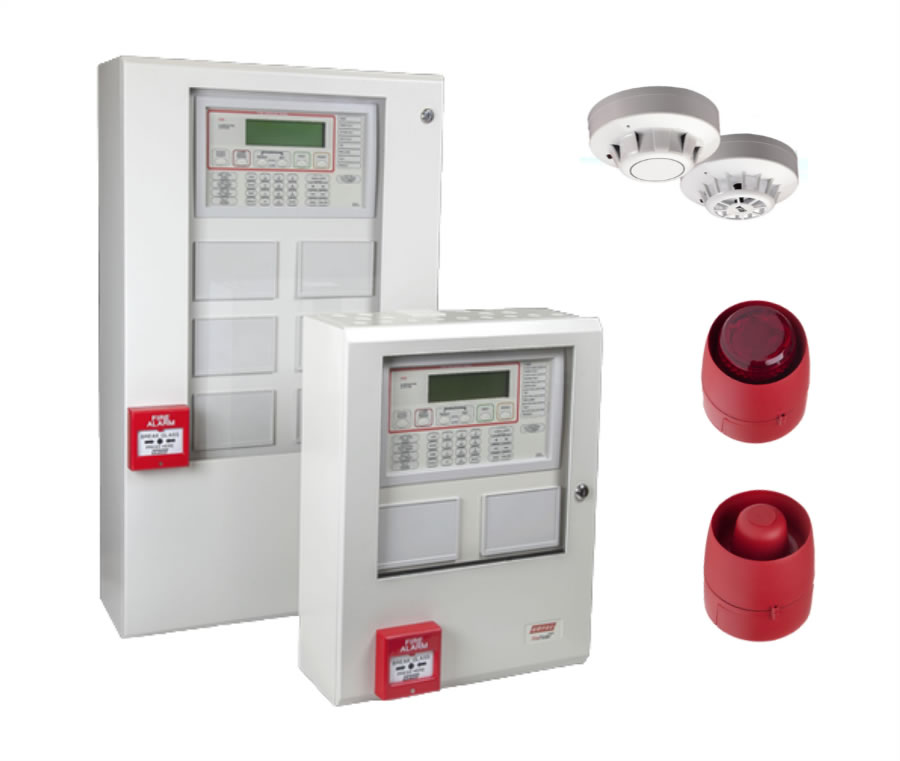
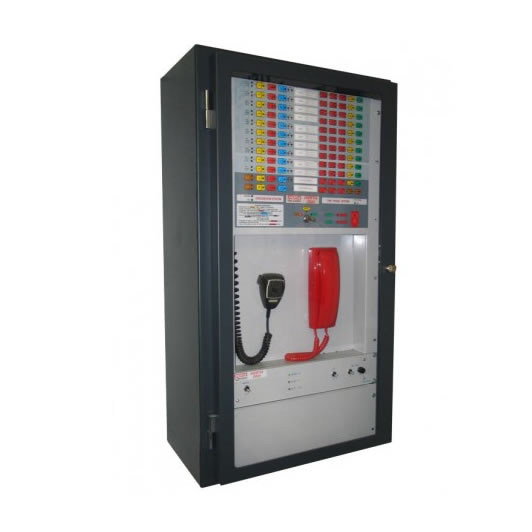
Emergency warning and intercom systems (EWIS)
The most important part of fire prevention is its early detection and, of course, warning the occupants of the building . Given the rapid nature of fire spread, notification and proper communication during an evacuation is vital in saving the lives.
Our EWIS solutions – typically for commercial applications – are tailored to each client’s needs.
Typically, an EWIS system is activated when the fire indicator panel signals an alarm and this activates the building occupant warning system. A voice message is also often used with evacuation instructions along with an evacuation alert.
Other EWIS features include committed emergency telephone contact between the emergency control panel and fire warden intercommunication points (WIP’s) in every zone.
We undertake maintenance and testing on these systems on a monthly, 6 monthly, annual, 5 yearly basis.
Exit and emergency lighting
While most people know of exit and emergency lighting, few know that they are lighting fixtures with a battery pack that turns on automatically when a building experiences a power failure.
In the event of an emergency, these lights play a significant role in the safety of those in the building. If there is a power failure, emergency lights illuminate, utilising batteries to visually indicate the fastest and safest route for occupants to exit the building.
Our exit and emergency lighting meet the Australian standards set out in AS/NZS 2293.
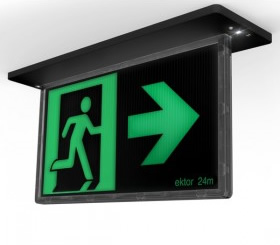
These standards outline the design, installation, maintenance and product requirements of emergency lighting systems required in all commercial premises.
Our testing and maintenance meets all the compliance requirements AS/NZS 2293 standard and are, of course, tailored to each client’s needs. We test 6 monthly and annually to ensure perfect operation at all times.

